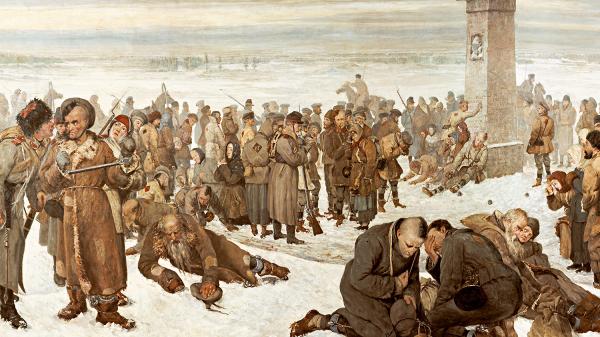So I’m a sucker for Russian literature, and while I was recently reading a biography of Leo Tolstoy written by his daughter—Alexandra Tolstoy’s The Life of My Father (1953)—I had to set it down when I heard about this just-out tome, Daniel Beer’s The House of the Dead: Siberian Exile Under the Tsars (2017), which I couldn’t resist. Published by Knopf and debuting in January, around the same time our nation began reeling from the Manchurian candidate slash “so-called” President Trump, its timeliness and relevancy is part of the draw. A hefty five-hundred pages long, it’s not a light read, but the fact that I finished it is also testament to its quality and fascinating material.

Ultimately The House of the Dead is a plaintive, tragic story of heartlessness and paranoia, of thousands upon thousands of political prisoners and common criminals cast into the rough wilds of Siberia, their ankles bound in chains, their heads shaved on one side, with little warm clothing, horrible food, and pathetic shelter for a century of steady abuse. It was an outrage for intelligent and compassionate Russians, and Beer quotes and references two of nineteenth-century Russian literature’s masters—Anton Chekhov and Fyodor Dostoyevsky—who witnessed the privations firsthand. I’ll warn the reader some of the material is not for the faint of heart. The conditions inside the actual prisons were brutal to the point of being sickening, but the ordinary conditions of life outside the physical prisons were gruesome enough. There’s a quote about Siberia being a “vast prison without a roof,” which seems accurate, but doesn’t do justice to the contradictions of this political expedient slash social experiment: the Russian government essentially seized and populated the lands of Siberia with settlers and with political prisoners, and the two populations intermingled very uneasily. Settlers wives and daughters were raped and murdered by “vagabonds”—essentially gangs of escaped prisoners who roamed the countryside, but could not make it all the way back to Mother Russia, otherwise known as Europeanized Russia, west of the Ural Mountains. Most of the prisoners had to walk there, from seventeen hundred to over two thousand miles, all the while their legs were in chains, tramping through bitter snow and ice in winter, heat and humidity in summer. They were sent east from the cities of Moscow and St. Petersburg to the Ural Mountains, and after the Urals passed a famous obelisk which marked the boundary between Europe and Asia. Here’s a famous painting that marks that point:

“Farewell to Europe!, 1894, former exile Aleksander Sochaczewski’s painting of his fellow Polish rebels of 1863 taking leave of Europe at the Siberian Boundary Post. The painting now hangs in Poland’s Museum of National Independence in Warsaw.”
It’s a terrific book, and has a political moral in tow: While the Czars exiled political prisoners out of fear of a popular uprising against their harsh policies, they created a crucible for the Bolshevik revolution by congregating those exiles all in one vast place. In recent Trump rallies the crowd shouted “Lock her up! Lock her up!” (referencing Hillary Clinton, of course) and bumper-stickers that read “Hillary for Prison, 2016.” There’s much talk in Op-Ed pages about Trump’s slippery slope of race-baiting and insistence on repeating lies, and we should heed the lessons of history when confronting the mendacity that emanates from our current government.
